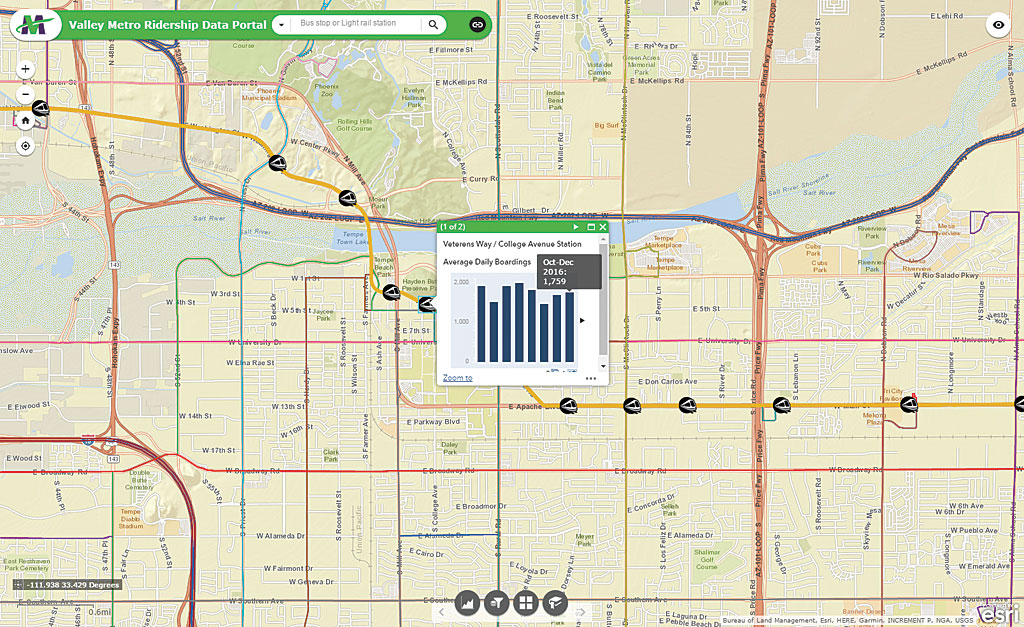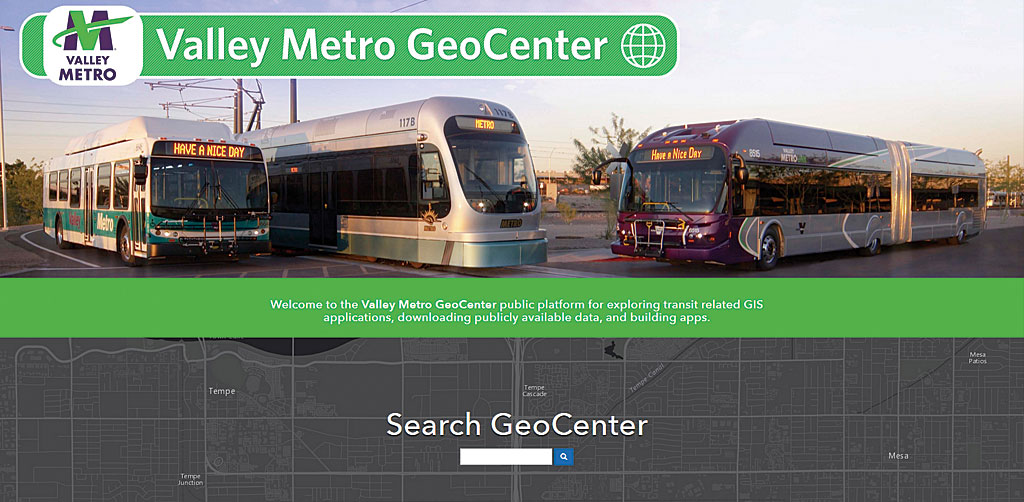The Arizona State Cartographer’s Office recently launched AZGEO—Open Data, an ArcGIS Open Data site that gives government organizations—such as the cities of Phoenix and Tucson and Coconino County—the ability to federate open data to one common site via the individual ArcGIS Open Data sites each organization has set up.
ArcGIS Open Data is an Esri-hosted solution that is available as part of an ArcGIS Online subscription. With ArcGIS Open Data, organizations can set up websites the public can use to search for and download data quickly and at no cost.

AZGEO—Open Data was created on behalf of the Arizona Geographic Information Council (AGIC) to create a one-stop shop for data from participating municipalities in the State of Arizona and other authoritative sources of geospatial data.
A wide range of data on a variety of topics, including zoning, air quality, employment, and transit, can be accessed at AZGEO—Open Data. The site also features applications that make the data instantly useful. They range from “A Tour Along the Arizona Trail,” an Esri Story Maps app built by the Arizona Trail Association, to “Rx Drug Drop Off Locations” from the Arizona Department of Health Services, which shows where prescription drugs can be safely disposed of.
The Arizona State Cartographer’s Office hosts and designs AGIC websites and manages the AZGEO data and servers, said Arizona state cartographer Curtis Pulford. The AZGEO—Open Data portal aligns with AGIC’s vision to provide credible, timely, and accurate geographic information that Arizona decision-makers and citizens can use, according to Pulford. It’s a good resource for app developers trying to create solutions that address important issues in the state.
Pulford said that AZGEO—Open Data collects what it deems authoritative data from government organizations. “Right now, we’re only harvesting from discoverable open data sites,” Pulford said. These authoritative data custodians use their ArcGIS Open Data sites to channel information through AZGEO—Open Data in a dynamic way using web services rather than static data.

According to Pulford, creating an open data site using Esri technology was simple. “The ease of setup was rather amazing,” Pulford said. “After we spent a little time studying ArcGIS Open Data and brainstorming on how we could best use it, we had most of our Open Data site operational in one afternoon. The one aspect that most matched our needs and made it work for us as part of our state portal was the ability to filter content for delivery. It was very important that we show only those custodians who we recognize as authoritative and Arizona-centric. That is what we have always done through AZGEO.”
For example, the public transportation agency Valley Metro provides information on its ridership numbers via its own ArcGIS Open Data site, Valley Metro GeoCenter and now through AZGEO—Open Data. People will find applications like the Valley Metro Ridership Data Portal that features ridership data, along with data on Valley Metro bus routes, light-rail stations and routes, bus ridership, transit centers, and park and rides.
“Valley Metro provides public transit service to 16 different jurisdictions in the Phoenix area. Open Data provides the most efficient means of getting each of these jurisdictions, as well as the public, accurate and authoritative transit-related GIS data,” said Cory Whittaker, GIS administrator for Valley Metro.
The City of Glendale provides information on planning and zoning using its open data portal, Glendale Arizona Open Data, and the AZGEO—Open Data site. The cities of Phoenix and Scottsdale do the same thing. This means entrepreneurs and others interested in pursuing economic development projects have one place to find data from multiple agencies.
Pulford said that over time, improvements will be made to AZGEO—Open Data that will strengthen search and categorization, make more open data available, and provide additional showcase applications. “We have now added, literally, hundreds of new data sources,” he said. “I think the data consumers within our state will be excited to discover these, and I can’t wait to see the new and exciting ways they make use of them.”

